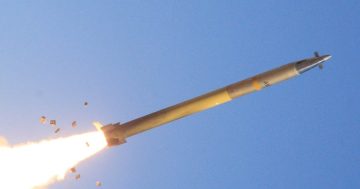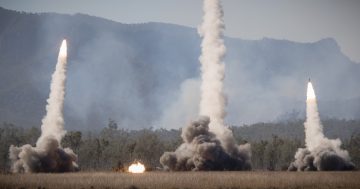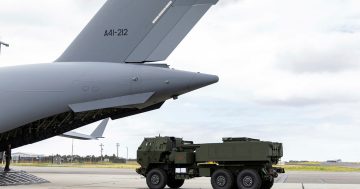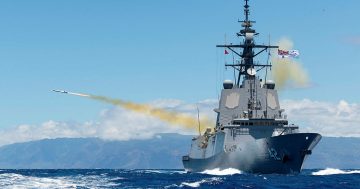
Defence Industry and Capability Delivery Minister Pat Conroy at the Press Club on 30 October. Photo: National Press Club.
Defence Industry and Capability Delivery Minister Pat Conroy has used an address to the National Press Club to announce the Federal Government’s Guided Weapons and Explosive Ordnance (GWEO) Plan.
Or should I say, re-announce it. For, as far as I can tell, there isn’t much new in the plan. Rather, it’s basically a summary of several announcements the government has made over the past couple of years, tied up with a neat bow with some additional detail.
One such re-announcement was a recommitment to manufacture Guided Multiple Launch Rocket Systems (GMLRS) rounds in Australia in partnership with Lockheed Martin. The 70-150 km-range GMLRS is fired by the M142 High Mobility Artillery Rocket System (HIMARS) system currently on order for the army and due to enter service next year.
Initial assembly of GMLRS rounds will occur at the Commonwealth’s Orchard Hills facility in western Sydney from next year. A more permanent location capable of producing 4000 rounds a year, not only for Australia but other HIMARS operators, is being sought, and is expected to be established and operational by 2029.
“By producing GMLRS at scale and investing in the development of a capable and resilient Defence industrial base to forge 155 mm M795 artillery projectiles, Australia can be more self-reliant and able to accelerate the delivery of capability to the ADF, as well as our international partners,” Mr Conroy said.
One new announcement was that Thales Australia has been selected as the preferred tenderer to manufacture 155 mm M795 artillery shells in Australia.
The 155 mm round has become standard for most Western and allied nations, with the M795 the standard 155 mm shell for guns of US origin, including the M777A2 light towed howitzer operated by the Australian Army.
Thales already has an ammunition manufacturing capability at the Commonwealth-owned Benalla Munitions Facility in Victoria, and will establish the first dedicated forge outside of the US, which will be capable of manufacturing up to 100,000 155 mm rounds a year to supply to other users as well as the Australian Army.
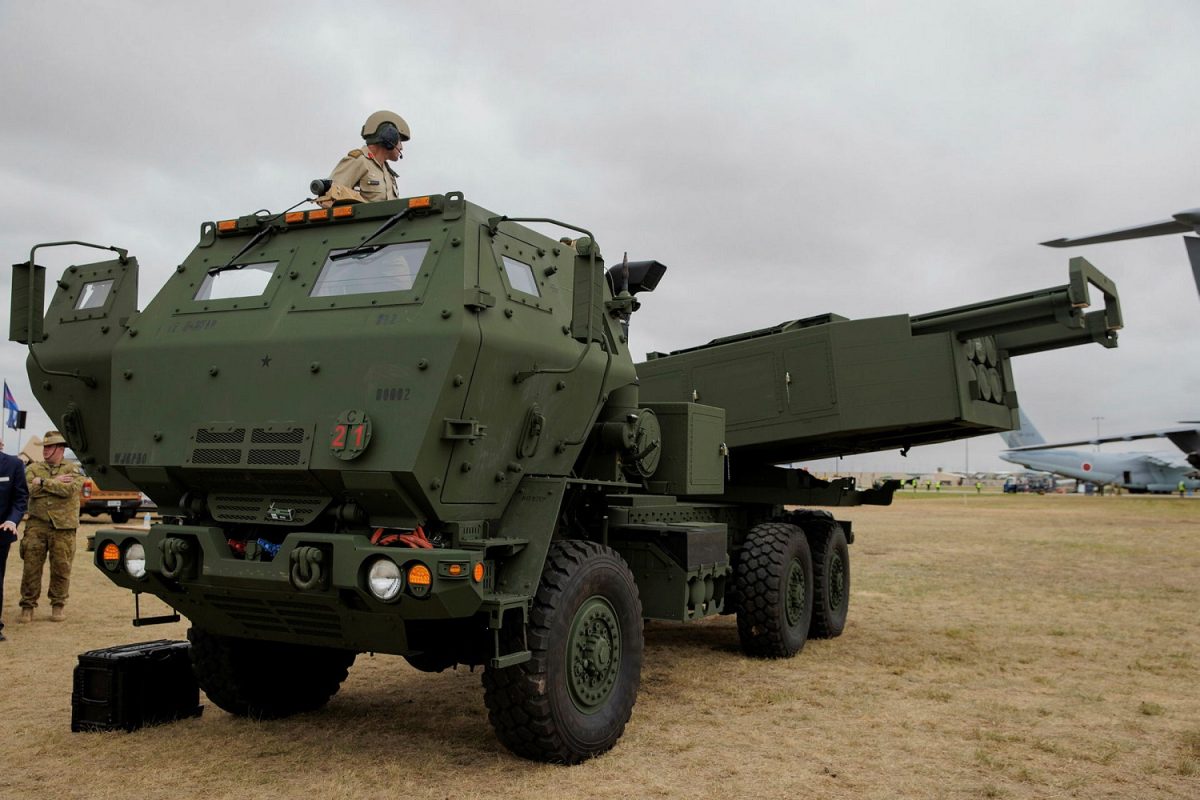
An M142 HIMARS missile system on display at the 2023 Avalon Airshow. Photo: ADF.
These two announcements come on the back of a commitment by the Commonwealth last month to boost Royal Australian Navy long-range air defence missile stocks.
On 22 October, the government announced it would spend $7 billion on Standard Missile 2 Block IIIC (SM-2 IIIC) and Standard Missile‑6 (SM-6) missiles, adding significantly to the magazine depth of the navy’s air defence capabilities. While the acquisition of these missiles was also previously announced as being a key element of the ADF’s ambitious integrated air and missile defence (IAMD) plans, the spend amount is new and significant.
The SM-2 is designed to intercept aircraft, uncrewed systems, and anti-ship missiles at ranges up to 100 km from a ship, while the SM-6 can intercept ballistic missile threats and attack surface targets.
At this stage, only the navy’s three Hobart-class destroyers will be capable of employing the SM-2 and SM-6 from their vertical launch systems (VLS), but the six planned Hunter-class frigates will also have this capability from the early 2030s.
The US Navy has also developed and recently deployed a 300 km-range air-launched version of the SM-6 from its Super Hornets. While there is no indication of any Australian interest in this, it opens up some interesting possibilities.
“The Standard Missile‑6 and Standard Missile 2 Block IIIC will enable our navy to strike maritime, land and air targets at long range, and provide a terminal ballistic missile defence capability, boosting the capacity for the ADF to safeguard Australians and their interests,” Defence Minister Richard Marles said.
The GWEO Plan basically brings into a single document these and other previously announced guided weapons announcements, including:
- The acquisition of the Joint Strike Missile (JSM) for the Royal Australian Air Force;
- The partnership with Kongsberg Defence Australia to manufacture JSMs and Naval Strike Missiles (NSMs) at a new facility to be built near Newcastle;
- The initial partnership with Lockheed Martin Australia to assemble GMLRS rounds in Australia;
- The $7 billion agreement with the US to acquire the Standard Missile 2 Block IIIC (SM-2 IIIC) and Standard Missile 6 (SM-6) long-range missiles;
- A five-year plan to develop hypersonic and long-range strike capabilities;
- A three-year plan to seek options from industry to manufacture rocket motors in Australia.
All of these factors will add significantly to the ADF’s ability to hold at-risk airborne, sea, and land-based targets at ranges significantly greater than previous ones.


